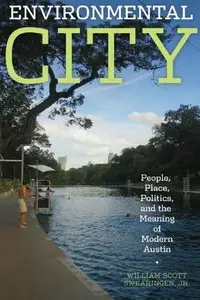Environmental City: People, Place, Politics, and the Meaning of Modern Austin By William Scott Jr. Swearingen
Publisher: University of Texas Press 2010 | 295 Pages | ISBN: 0292721811 | PDF | 7 MB
Publisher: University of Texas Press 2010 | 295 Pages | ISBN: 0292721811 | PDF | 7 MB
As Austin grew from a college and government town of the 1950s into the sprawling city of 2010, two ideas of Austin as a place came into conflict. Many who promoted the ideology of growth believed Austin would be defined by economic output, money, and wealth. But many others thought Austin was instead defined by its quality of life. Because the natural environment contributed so much to Austin's quality of life, a social movement that wanted to preserve the city's environment became the leading edge of a larger movement that wanted to retain a unique sense of place. The "environmental movement" in Austin became the political and symbolic arm of the more general movement for place. This is a history of the environmental movement in Austin--how it began; what it did; and how it promoted ideas about the relationships between people, cities, and the environment. It is also about a deeper movement to retain a sense of place that is Austin, and how that deeper movement continues to shape the way Austin is built today. The city it helped to create is now on the forefront of national efforts to rethink how we build our cities, reduce global warming, and find ways that humans and the environment can coexist in a big city. About the Author WILLIAM SCOTT SWEARINGEN, JR., teaches Environmental Science and Policy, Urban Sociology, and Environmental Sociology at St. Edward's University in Austin, Texas. He has been involved in the environmental movement in Austin for two decades.



